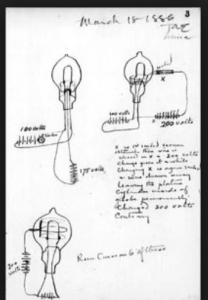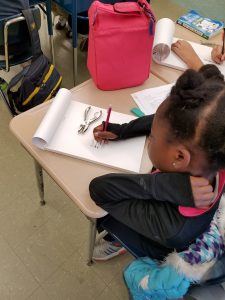

This week the fourth graders at the Read School in Bridgeport received their sketch journals, which is a right-of-passage in the world of Visual Literacy… it is treated as sort of a graduation, or an award for engaging in art-as-thinking. The journals are a sign of trust on the part of the teacher that the kids are ready to become gatherers of their thoughts, the world around them, and seekers of evidence.
I started this lesson by telling the kids that Thomas Edison, inventor of the light bulb, left behind over 2,500 journals filled with sketches and notes. Most of the sketches were unsuccessful attempts at various inventions. This helped the kids to see that failure is a necessary step to success – and that their journals are places where they are expected to fail. This dissolved any nerves that may have been brewing among the kids who don’t see themselves as “artists.”
We then talked about scientific inquiry, and the practice of drawing as an observation tool. I handed out various gadgets: staplers, hole-punchers, locks… and they drew them carefully into their journals, looking for clues about how they work.


The kids talked as they drew, excited to explain what they were discovering about how the gadgets work. This conversation focused mostly on springs, and how they are used to force pressure within a mechanical object. But at some point, the teacher asked if this activity reminded them of the skills they use in reading. That is when the topic of scientific inquiry pivoted to gathering evidence as readers.
Rather than describe this revelation myself, I will let this fourth grader explain:
https://www.youtube.com/watch?v=zOKD0LSvd64